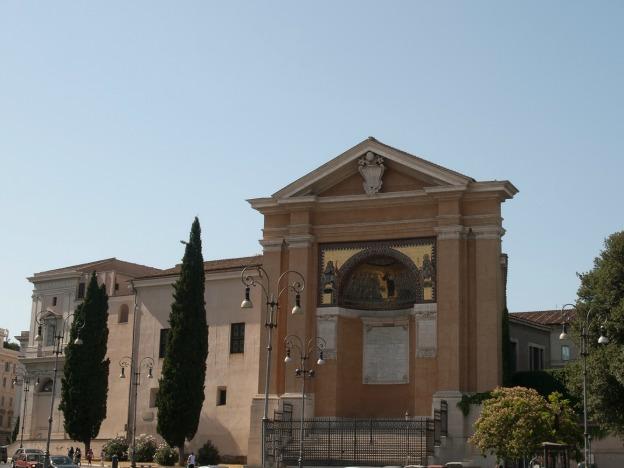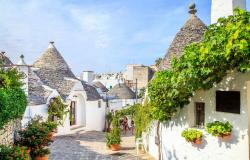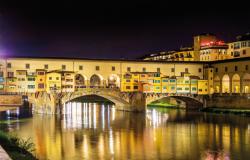Rome's Holy Staircase
ITA:

Commissioned by Pope Sixtus V at the end of the 16th century, the Sanctuary of the Scala Sancta in Rome is better known to the faithful than to tourists - but that may soon change with the special jubilee year set to begin on December 8.
Adjacent the Basilica of St. John in the Lateran, one of the four papal basilicas of Rome and the oldest church of the Western World, the Sanctuary of the Scala Sancta was built around the chapel of the Patriarchum, the first residence of popes, and the Scala Sancta, or Holy Staircase, the stairs said to have been walked by Jesus on his way to trial before Pontius Pilates in Jerusalem during the events known as the Passion.
According to tradition, the 28 marbles stairs, now encased by wood for protection, were brought to Rome by St. Helena, mother of Emperor Constantine, in 326 A.D. For centuries, the Scala Sancta has attracted Christian pilgrims who wish to honor the Passion of Jesus by climbing the steps on their knees while praying. A plenary indulgence has been granted by the Catholic Church to those who do so.
The stairs lead to the Sancta Sanctorum, or Holy of Holies, the personal chapel of the early Popes. The chapel is in fact part of a large complex that forms the Lateran Palace; from the fourth century, and for about a thousand years, the palace was the main residence of the popes, until the seat was ultimately moved to the Vatican.
Little-known to the public is also the important artistic heritage of the palace: the walls and the vault of the Holy Staircase are frescoed with episodes from the Passion; on top of the stairs, the hall is decorated with scenes from the Crucifixion, Resurrection and Ascension; the pope’s private chapel and the two side chapels house frescoes glorifying Sixtus V and his actions. They were carried out in a couple of years by about 100 Mannerist painters under the direction of Cesare Guerra and Giovanni Nebbia.
Commissionato da Papa Sisto V alla fine del 16° secolo, il Santuario della Scala Santa a Roma è più noto ai fedeli che ai turisti - ma le cose potrebbero presto cambiare con il Giubileo straordinario, il cui inizio è previsto per l'8 dicembre.
Adiacente la Basilica di San Giovanni in Laterano, una delle quattro basiliche papali di Roma e la chiesa più antica del mondo occidentale, il Santuario della Scala Santa è stato costruito intorno alla cappella del Patriarchum, la prima residenza dei papi, e alla Scala Sancta, o Scala Santa, i cui gradini si dice siano stati percorsi da Gesù per raggiungere l’aula dove avrebbe subito l’interrogatorio di Ponzio Pilato a Gerusalemme, durante gli eventi noti come la Passione.
Secondo la tradizione, i 28 gradini di marmo, ora ricoperti di legno per protezione, furono portati a Roma da Sant'Elena, madre dell'imperatore Costantino, nel 326 d.C. Per secoli, la Scala Santa ha attratto pellegrini cristiani che vogliono onorare la Passione di Gesù salendo i gradini in ginocchio mentre pregano. Un’indulgenza plenaria è concessa dalla Chiesa cattolica a chi lo fa.
Le scale conducono al Sancta Sanctorum, o Santo dei Santi, la cappella personale dei primi papi. La cappella fa parte di un grande complesso che forma il Palazzo del Laterano; dal quarto secolo, e per circa un migliaio di anni, il palazzo fu la residenza principale dei papi, fino a quando la sede fu trasferita in Vaticano.
Poco noto al grande pubblico è anche l'importante patrimonio artistico del palazzo: le pareti e la volta della Scala Santa sono affrescate con episodi della Passione; in cima alle scale, il corridoio è decorato con le scene della Crocifissione, Resurrezione e Ascensione; la cappella privata dei papi e le due cappelle laterali ospitano affreschi che glorificano Sisto V e il suo operato. I dipinti sono stati realizzati in un paio di anni da circa 100 pittori manieristi, guidati da Cesare Guerra e Giovanni Nebbia.











